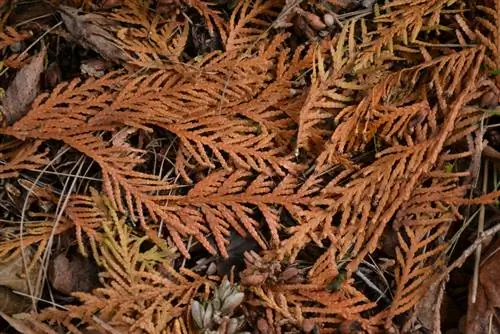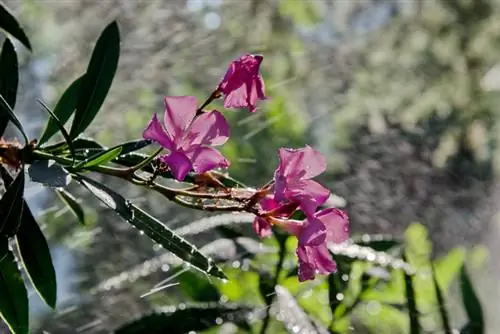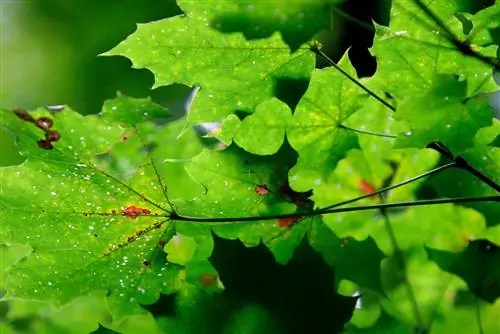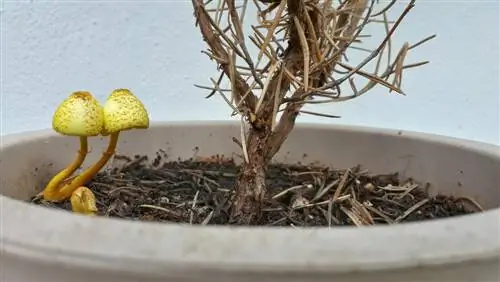- Author admin [email protected].
- Public 2023-12-16 16:46.
- Last modified 2025-06-01 06:02.
Red pustules, black spots and white coating on maple trees set alarm bells ringing for home gardeners. Such damage is typical symptoms of fungal infestation. You can read about the diseases behind them and how to combat them here.
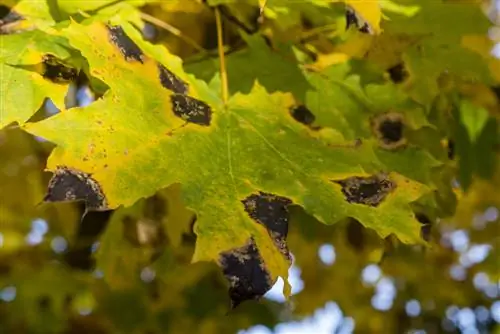
How do you treat fungal infestation on maple trees?
Maple fungal infestation can manifest itself as red pustular disease, tar spot disease or mildew. Red pustules can be combated by cutting back into he althy wood, tar stains require removal of leaves and mildew can be combated with a milk-water mixture.
Healing red pustule disease with pruning shears - How to do it
The unmistakable damage pattern leaves no doubt that a maple tree is infected with red pustule disease. Species weakened by improper pruning or care errors, such as sycamore maple and Norway maple, are usually affected. Fungicides are ineffective. Combating it is less complicated than expected. You can read typical symptoms and the correct procedure here:
- First signs in spring and summer: wilted leaves and floppy shoot tips, brownish bark
- Unmistakable symptom: vermilion-red, tiny, round fruiting bodies on branches and trunk
- Combat: cut back to he althy wood
The best time for the healing cut is a dry, overcast day in September. It is important to ensure that you remove all clippings from the garden. Otherwise, the insidious fungal spores will look for another victim.
Fighting tar spot disease - goodbye to black spots
The fungus Rhytisma acerinum causes one of the most common damage to maple species. In the rainy spring, the spores attack the lush green foliage and initially cause yellowish discoloration. As it progresses, shiny black, slightly raised spots with a yellow halo form, from which the disease gets its name.
Successful control exploits a strategic mistake made by the fungal pathogens. The infectious spores of the next generation only develop in spring on the previous year's fallen leaves. Affected gardeners break the development cycle by removing all leaves in autumn.
Mildew fungi surrender to fresh milk - this is how it works
In the triumvirate of the most common causes of fungal infestation on maples, mildew cannot be missing. Mealy-white fungal growth on the beautiful leaves is the classic symptom. In the early stages of the infestation, you can fight the infection with fresh milk. Add 125 milliliters of fresh milk to 1 liter of water and spray all maple leaves on the top and bottom sides until there are no more white deposits.
Tip
Unfortunately, not all fungal diseases on maple trees can be combated easily and without chemicals. Verticillium wilt can be identified by the leaves and shoots dying in places within the tree crown. In the very early stages of infestation on young maples, immediate replanting may be able to save the tree. In most cases you cannot avoid deforestation.



